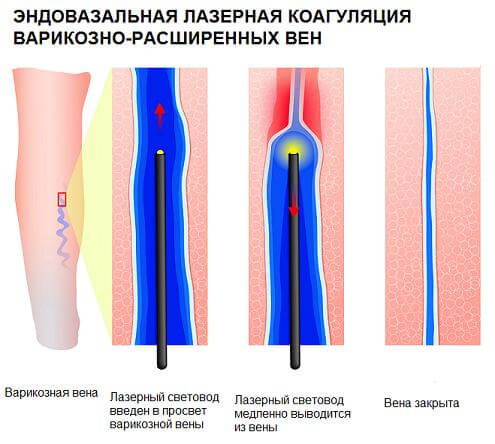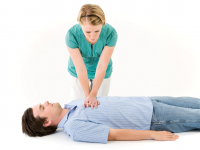How does the defibrillator work?
Author Ольга Кияница
2017-10-31
Defibrillator is a medical device that is designed for use in electropulse therapy. Often used for various violations of rhythms, which are accompanied by too high heart rate. The first experiments with defibrillation were carried out in dogs in 1899. Their main goal was to study the mechanism of death from electric current, since the very concept of defibrillation was not yet fully formed. This was done in 1932 by the Hooker team. As a result of their experiments, the possibility of electroshock resuscitation was proven.
The first autonomous defibrillator was created in the Soviet Union in the mid-1950s by Klimov and Eskin, but for various reasons it was impossible to carry out a wide popularization of experiments.
The first prototype cardioverter defibrillator weighed about 27 kg. It was created by Baruch Berkowitz, while the main development of the instrument is conducted by Zola Bernard Loon. With such a device, a 100 J pulse was created that could be used in an open heart. For a discharge to be used through a closed chest, an average pulse was applied at 300 J.
How does the defibrillator work? - Theories in 1 minute | BrainTime
The principle of the defibrillator
The basis of the device's operation is the generation of short-term electrical pulses, the transmission of which is transmitted to the patient's body through specially designed devices:
- irons are professional devices that are manually tuned;
- The electrodes are glued and operate in an automatic mode.
When using a defibrillator, clear safety precautions must be taken:
- Before staining the electrodes of their surface, they are lubricated with a special conductive gel, in some cases a special moisturizing solution is used.
- Electrodes or irons are pressed to the body as tightly as possible so that no tension is lost and no burns occur.
- The contact of the electrodes with each other or by means of an electrically conductive gel must not be adhered to.
- Near the patient there are only people who carry out defibrillation, others are far enough away.
- When working with a defibrillator, do not touch the metal objects.
- Different instruments that record ECG or control artificial ventilation of the lungs should be disconnected.
The first discharge passes about 0,01 sec, its voltage is not more than 7 kV. To feed it, a condenser that works in an automatic mode or 220 W is used. This single digit excite the fibers of the heart muscle, as a result of which the propagating wave of fibrillation is blocked. The subsequent synchronization of the excitation, relating to individual areas of the myocardium, helps restore normal heart function.
It is important to remember that during discharge of discharge, 96% of stress falls on the chest tissue, and only 4% reaches the heart.
The beginning of defibrillation from small discharges of a condenser allows to prevent the development of postremunizational cardiomyopathies. Also, depending on the model, the charge energy is different. If in import models the measuring unit is Watt-second and Joule, then in domestic ones - kilovolt.
Features of modern defibrillators
Today, defibrillators are often released with an automatic mode of operation. This allows them to use even unprofessional health workers. Such models today are widely used in airplanes, trains, they are stacked in first aid kits, which are then used in medical points of different locations.
It should be noted that in the case of assistance by an automatic defibrillator during the first minutes from the onset of an attack, the effectiveness of its use reaches 98%.
The main differences between modern defibrillators:
- The level of discharge is often selected in an automatic mode, for this device the various parameters are compared (sex and age of the patient, its height and weight, tissue resistance).
- The instrument selects the optimal polarization and placement of the electrode.
- If necessary, the user is notified by means of prompts and signals.
- When normalizing cardiac activity, a button that blocks discharge is automatically triggered.
Key errors in defibrillation
- Before the beginning of defibrillation, no intensive care was taken, or after a heart massage a long break was performed.
- The electrodes on the thorax were pressed with insufficient force.
- The patient was characterized by small-wave fibrillation and the necessary measures were not taken to strengthen the energy of the heart muscle.
- The discharge voltage has been selected incorrectly (too high or, conversely, too low).
Thus, only people who are knowledgeable in this matter can make defibrillation.With the help of this method of eliminating fibrillation it is possible to save patients in different conditions and under various circumstances.
Similar articles

In the early stages of the development of varicose veins, conservative treatment is most often used, which includes taking tablets of drugs and applying ointments to the affected areas of the body. In severe cases, resorted to the removal of veins. For this purpose, laser varicose vein treatment is widely used today. With its successful implementation, the general well-being of the patient improves markedly.

In critical situations, when a person does not have a heart rhythm or respiration, cardiopulmonary resuscitation is performed first. With the help of standard techniques, you can help the patient avoid death, or at least support his life activity until the arrival of the medical staff.

In diagnostics of cardiovascular diseases an important role is played by timely diagnostics. It is often enough to conduct a standard ECG to make a correct diagnosis. In other cases, a diverse study of the heart is required, which allows you to establish the exact cause of the illness and conduct an effective treatment.
